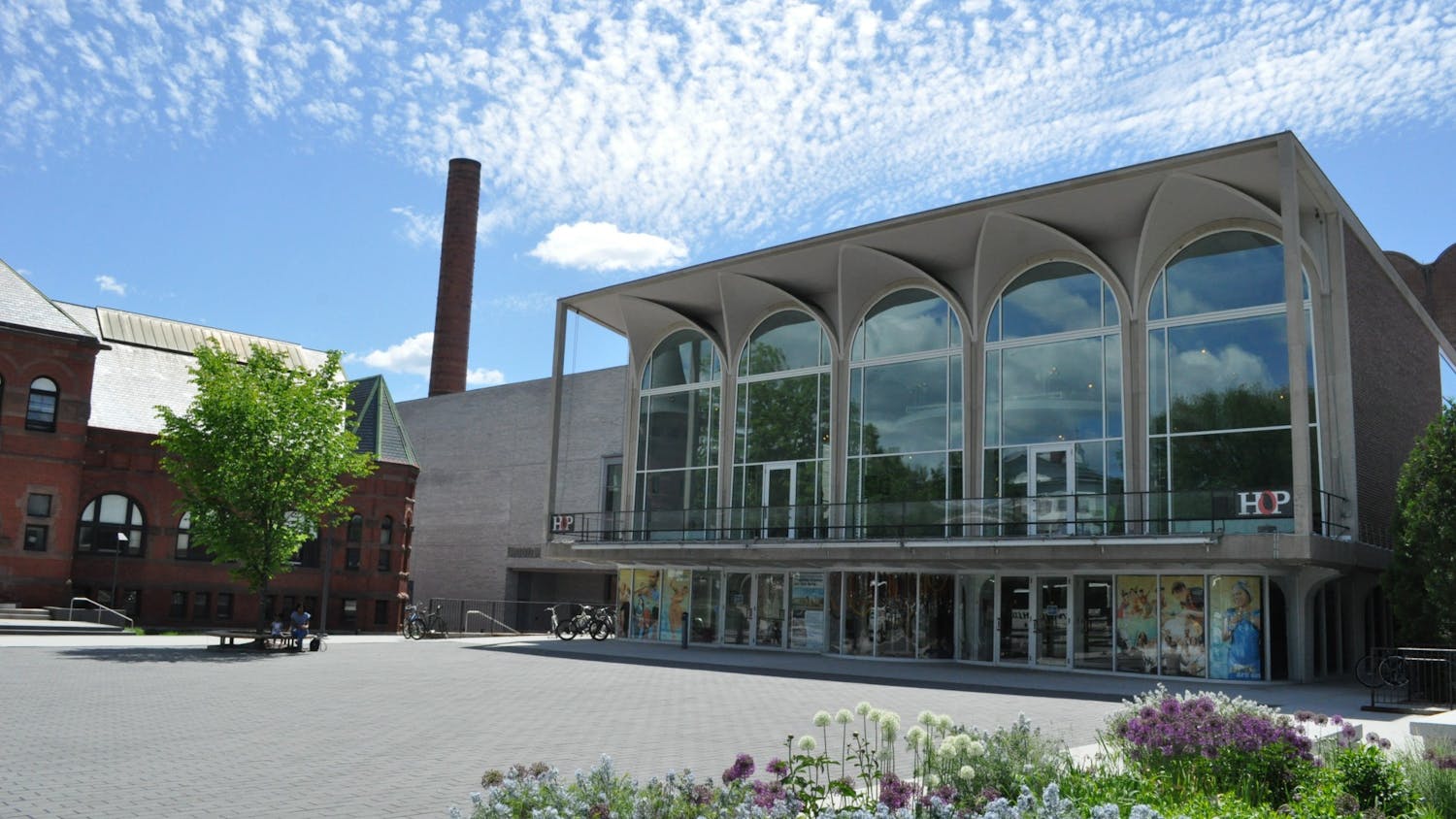Most College students visit the Hop at least once a day to gaze hopefully into their H.B.'s, perhaps making sure to rub the nose of the lucky Hop statue before an exam.
But over the last few months things have started to look a little different in the front of the Hopkins Center. The old staircase has been mysteriously moved from the center of the lobby to the right entrance. The walls have changed color. And a maroon-colored seating area has appeared directly in front of the old Center Theater. What is happening to the Hop we all know and love?
Because of a generous donation from Florence Bennett Moore in memory of her husband, Lansing Porter Moore '37, the Center Theater will re-open on Wednesday, Nov. 9 as The Lansing Porter Moore Theater. The visible changes to the lobby and Top of the Hop are small compared to the progress made since mid-May inside the former Center Theater.
The renovation, which included both cosmetic and functional aspects, was a $1.5 million dollar project, with an additional $0.5 million dollars set up as an endowment intended for future maintenance and upgrading of the facility. Moore also gave an additional gift of $300,000 specifically to upgrade the Top of the Hop and the Hopkins Center lobby.
The Moore Theater project began organization in March 1993. Hopkins Center Assistant Director Marga Rahmann said once Moore's gift was offered, a core planning committee of about three dozen people formed, including faculty members, the Drama department, other people who use the Center Theater space, Hopkins Center technicians, program designers and students, especially drama majors.
The Hopkins Center hired the Peter George Association from New York City, a company that specializes in theater renovation, to come to Hanover and help the team plan and price their ideas for the Moore Theater.
The original "wish list" for the project exceeded the $1.5 million available for use, according to Hopkins Center Director Lewis Crickard. The committee had to reconsider the priorities of the project and scale back the expected cost to meet the allotted budget.
Crickard said, "I think the interest in the project from the people in the building was really remarkable. People put a lot of time into planning and committees in the most constructive sense."
The Jackson Construction Company wasted no time in starting the demolition phase of the project. Drama Professor Paul Gaffney, who acted in the last play of Spring term, said, "The day after we closed, the construction team showed up - literally. The old seats were gone within 24 hours. They just moved in like a swarm of bees and really went to work."
The demolition phase included, among other tasks, tearing out the old plaster cyclorama in the back of the stage, removing the old seats, tearing out old wiring, ripping up old carpeting, jack hammering the lobby steps out and cutting a space for the new steps.
So much dust was produced from the construction that the entire stock of costumes had to be moved to other rooms in the Hopkins Center, which were subsequently sealed off with plastic, paper and duct tape to keep the dust out.
The electronic equipment around the theater and all scenery and props were moved to storage areas on campus. Office computers had to be covered daily with sheets of plastic so they would not be ruined by the dust. During the renovation productions were held in alternate places such as Collis Common Ground, and classes were moved to Thornton or Wilson Hall. This fall there no major productions performed.
But this loss will be more than redeemed: the Nov. 9 opening of the Lansing Porter Moore Theater will be christened by five performances by the highly acclaimed Maly Drama Theater of St. Petersburg, Russia. The Maly is considered one of the world's best theater companies and its productions have won numerous international awards.



